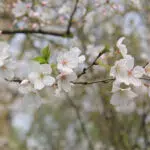Beltane, or May Day, is celebrated every year on May 1. It is one of the eight Sabbats and falls halfway between the spring equinox and the coming summer solstice. This day marks the coming summer and is associated with fertility. It represents the peak of spring and the beginning of summer when Earth’s energies are considered the strongest. The festival is celebrated with bonfires, dancing, and performing fertility rituals. In ancient times, Celts used to light two bonfires because they believed the bonfires would purify people and increase their fertility. People would also pass cattle between the two fires, as they thought it would purify the cattle and ensure the herd’s fertility.
History of Beltane
The word ‘Beltane’ comes from the Celtic God ‘Bel,’ which is an Irish word for ‘fire.’ So, this festival should be celebrated by lighting a bonfire. The fires recall the growing power of the sun, and it is an opportunity to cleanse and renew the conditions of the community. But from ancient times, this practice declined, and the towns and villages slowly abandoned it in the 19th century. The last Beltane fire recorded in Helmsdale took place in 1820. The lighting stopped in the Shetland Isles by the 1870s. By the start of the 20th century, Edinburgh, which had celebrated Beltane since time immemorial and lit the fires during Arthur’s time, stopped celebrating it.
It was in 1988 when there was a revival of the great tradition. In Edinburgh, Beltane fires were lit once again. Angus Farquhar led the movement, followed by the industrial band Test Dept, who took part in the first Beltane performance. They recreated the sense of community and an appreciation of the cyclical nature of the seasons. Within five years, the number of performers and the number of the audience grew.
People came to support the continuation of the festival. Calton Hill became the seat of the new Beltane celebrations. In 1992, Angus Farquhar organized his last Beltane. The Beltane Fire Society formed and took his mantle. By 1992, the audience reached 10,000, and by 2001, the festival took on its first paid production manager to coordinate the growing event. In 2004, they started charging for tickets to attend the event.
Beltane timeline
Beltane is mentioned in the glossary to Cormac — the Bishop and King of Munster.
The fires stop, and people cease celebrating the Beltane.
The fires are lit once again by Angus Farquhar.
Angus Farquhar lights his last fire, and Beltane fire society takes over his mantle.
Beltane FAQs
What is the difference between Samhain and Beltane?
What occurs at Samhain is the opposite of Beltane — the end of summer and the return of cattle from their high summer pastures, received by large bonfires.
How are people purified on this day?
People leap over the Beltane fire to bring good fortune, fertility, and happiness through the coming year.
How do you celebrate the wheel of the year?
It is celebrated with bonfires and by dancing around a maypole.
Beltane Activities
Dance and celebrate with people
It is a day to welcome the sun and the summer season. Harness the energy of the sun and dance this day with people.
Light fires
Fires symbolize purity! So, you can light fires to purify yourself and welcome the fertility goddess on this day.
Reconnect with nature
Go camping and enjoy the wonders of nature. It is a day to enjoy the merriment and thank the fertility goddess.
5 Interesting Facts About Beltane
Green Man welcomes the summer
The Green Man, the representation of nature, reaches the height of his power during Beltane and welcomes the summer.
Battle of May Queen and Winter Queen
According to Wiccan beliefs, the day depicts the battle between the May Queen and the Winter Queen.
The four major Celtic festivals
Samhain, Imbolc, and Lughnasadh are the other major Celtic festivals.
Edinburgh Beltane festival is the largest
Edinburgh Beltane fire festival is one of the most famous celebrations, and it happens on the night of April 30.
It is observed at different times
In the Northern hemisphere, it is celebrated from April 30 to May 1, while in the Southern hemisphere, it is celebrated from October 31 to November 1.
Why We Love Beltane
It celebrates the cycle of life
Beltane is symbolic of the natural cycle of life and death and the changing seasons. It respects nature and its cyclical essence.
It brings the community together
Thousands of people come together to celebrate this lost festival. The celebration is full of music and dance.
It welcomes summer
This day welcomes the onset of summer. It is supposed to purify people and welcome fertility in the land.
Beltane dates
| Year | Date | Day |
|---|---|---|
| 2026 | May 1 | Friday |
| 2027 | May 1 | Saturday |
| 2028 | May 1 | Monday |
| 2029 | May 1 | Tuesday |
| 2030 | May 1 | Wednesday |











































































































































































